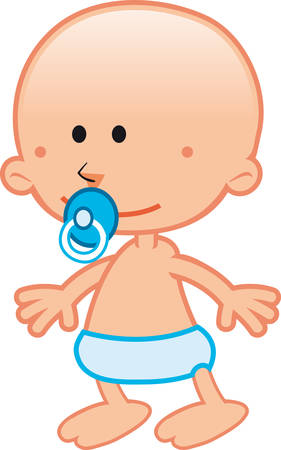Understanding Baby’s Physical Development Timeline
During the first year of your baby’s life, you’ll witness a fascinating journey as they progress through key physical milestones. Each child develops at their own pace, but there are general age ranges that British parents can expect for rolling, sitting, and crawling. Understanding this timeline helps you provide a safe and supportive environment tailored to each stage. Here’s an overview of typical milestones during the first year, highlighting when these important skills usually emerge:
| Milestone | Typical Age Range | What to Expect |
|---|---|---|
| Rolling Over | 4-6 months | Babies begin to roll from tummy to back first, then from back to tummy as muscles strengthen. |
| Sitting Up | 6-8 months | Most little ones can sit with minimal support by six months, gaining stability over time. |
| Crawling | 7-10 months | Crawling styles vary; some babies might scoot or commando crawl before mastering hands-and-knees crawling. |
It’s important to remember that these ages are guidelines rather than strict deadlines—some babies may reach milestones slightly earlier or later. In the UK, health visitors often check on your baby’s development during routine visits, so don’t hesitate to discuss any concerns with them. By understanding what to anticipate and when, you can celebrate each achievement while ensuring your home is ready for your baby’s increasing mobility.
2. Rolling Over: A Baby’s First Moves
Rolling over is often the first significant physical milestone for babies in the UK, usually occurring between 4 to 6 months of age. This exciting development marks your baby’s growing muscle strength and coordination. Parents and carers should look out for early signs, such as your baby rocking from side to side, lifting their head higher during tummy time, or starting to push up on their arms.
Typical Age Range for Rolling Over
| Age (Months) | What to Expect |
|---|---|
| 0-3 | Head lifting during tummy time; limited movement |
| 4-6 | Most babies start rolling from tummy to back; some may begin rolling back to tummy towards 6 months |
| 6+ | Rolling both ways becomes more consistent |
Signs Your Baby Is Ready to Roll Over
- Lifting head and shoulders during tummy time
- Pushing up on arms when lying on the tummy
- Swaying or rocking side to side while on their back or front
- Kicking legs energetically
- Showing increased curiosity and reaching for nearby objects
Safe Ways to Encourage Rolling Over at Home
- Tummy Time: Offer supervised tummy time daily on a soft blanket, always keeping an eye on your baby.
- Encouraging Reach: Place favourite toys just out of reach to motivate gentle rolling movements.
- Praise and Reassurance: Cheer your baby’s efforts—your encouragement helps build their confidence.
- A Safe Space: Ensure the floor is clear of hazards, with no loose blankets or pillows that could obstruct movement or breathing.
- Avoid Elevated Surfaces: Always keep your baby on the floor while practising, never on a bed or sofa where they could roll off.
Your Safety Checklist for Rolling Over Milestones (UK Guidance)
- Supervise all play sessions closely.
- Remove small objects within reach to prevent choking risks.
- If you have pets, keep them away during tummy time sessions.
- Avoid using baby loungers or wedges that restrict natural movement.
- If you’re concerned about your baby’s progress, consult your health visitor or GP for tailored advice.
Rolling over is an exciting step in your baby’s journey—by providing a safe environment and gentle encouragement, you’ll help set the foundation for future mobility milestones.

3. Sitting Up with Confidence
As your baby transitions from lying down to sitting up, its a truly exciting milestone that marks growing strength and coordination. In the UK, most babies begin attempting to sit with support around 4-6 months, gaining independence as they approach 7-9 months. At this stage, your baby learns to balance and strengthen their core muscles, preparing for even more movement in the coming months.
Supporting Your Baby Safely
To help your little one master sitting up, gentle encouragement and safety are key. Always supervise your baby during practice sessions and avoid leaving them propped up on sofas or beds where there is a risk of rolling off. Instead, use a soft play mat or rug on the floor, which is common in many British homes.
Safe Floor Time Set-Up
| Item | Why It’s Important | UK Home Example |
|---|---|---|
| Soft Rug or Play Mat | Cushions any tumbles and keeps baby comfortable | Many British living rooms have large area rugs or dedicated play mats |
| Pillows/Cushions | Provide support behind baby as they learn to balance | Sofa cushions or nursery pillows placed around play area |
| Toys Within Reach | Encourage reaching and trunk rotation skills | Soft plush toys or sensory objects on the mat |
| Clear Surroundings | Reduces risk of bumps or choking hazards | Tidying away small objects and removing coffee tables nearby |
Practical Advice for British Parents
- Place your baby on the floor in a safe area each day for short sessions, gradually increasing as they grow stronger.
- If you have hard floors (like wooden flooring, common in many UK homes), consider extra padding under your mat for added comfort.
- Avoid bulky clothing that can restrict movement; opt for babygros or leggings during floor time.
- Stay close by to offer reassurance and catch any unexpected wobbles—your presence is the best support!
Sitting up not only boosts your babys confidence but also gives them a new perspective on their surroundings. With careful supervision and a well-prepared environment, you’ll help lay the foundations for their next big leap: crawling.
4. Crawling: Exploring a Whole New World
As your baby approaches the crawling stage, you’ll notice their growing curiosity and determination to explore every nook and cranny of your home. This is a major milestone in the first year, often occurring between 6 to 10 months for most British babies. While some little ones might skip crawling altogether and move straight to standing or cruising, many will develop their own unique way of getting around. Understanding the different crawling styles and how they typically present in British households can help you better support your baby’s development—and keep them safe as they become more mobile.
Common Crawling Styles
| Crawling Style | Description | How Common in the UK? |
|---|---|---|
| Classic Hands-and-Knees Crawl | Moving on hands and knees, rocking back and forth before progressing forward | Most common; seen in the majority of babies |
| Bum Shuffling | Scooting along on bottom using arms and legs for movement | Quite typical; especially in urban flats with hard flooring |
| Commando Crawl | Dragging body forward while lying on tummy, using arms to pull | Frequently observed, especially during early crawling attempts |
| Bear Crawl | Crawling with arms and legs straight, bottom in the air | Less common but not unusual |
What’s Typical for British Babies?
The classic hands-and-knees crawl is most often seen, but don’t be alarmed if your little one prefers bum shuffling—especially if you live in a flat with laminate or wooden flooring. Many British parents notice this style because it’s gentler on little knees when carpets are limited. Regardless of style, what matters most is consistent progress in mobility and muscle coordination.
Practical Baby-Proofing Recommendations
With increased mobility comes new safety challenges. Whether you’re living in a city flat or a suburban house, here are practical baby-proofing tips tailored for UK homes:
For Flats:
- Install corner protectors on low furniture, especially where space is tight.
- Secure loose wires and trailing leads—common hazards near entertainment centres.
- Add non-slip pads under rugs to prevent sliding on hard floors.
For Houses:
- Use stair gates at both the top and bottom of stairs (British standards recommend BS EN 1930:2011 certified gates).
- Install window locks, especially on upper floors where curious crawlers may reach sills.
- Anchor heavy furniture such as bookcases and TVs to the wall to prevent tipping.
General Safety Tips:
- Keep cleaning products and medicines out of reach or locked away.
- Cover electrical sockets with childproof covers.
- Place safety catches on kitchen cupboards and drawers.
Crawling opens up a world of adventure for your baby—and presents new safety responsibilities for you. By understanding your baby’s preferred style of movement and making thoughtful adjustments around your home, you can provide a safe environment that encourages healthy exploration and development during this exciting phase.
5. When to Seek Advice: What’s Within the Range of ‘Normal’
Every baby develops at their own pace, and while some might be rolling over or crawling earlier or later than others, it’s important to know what’s typical and when to seek guidance. The NHS recognises a wide range of ‘normal’ when it comes to physical milestones in the first year. Parents and carers are encouraged to observe their baby’s progress without comparing too closely with others. However, there are signs that may indicate a need for further support from your Health Visitor or GP.
Recognising Individual Development Patterns
It’s helpful to remember that small differences in timing are usually not a cause for concern. For example, some babies crawl as early as 6 months, while others may skip crawling altogether and move straight to pulling up or walking. Using NHS resources such as the NHS Baby Development Guide can provide reassurance and clear information about what you might expect each month.
When Should You Contact Your Health Visitor or GP?
| Developmental Concern | Recommended Action |
|---|---|
| Your baby isn’t rolling over by 7 months | Discuss with your Health Visitor for advice and possible assessment |
| Your baby doesn’t attempt to sit with support by 9 months | Arrange a review with your GP or Health Visitor |
| No interest in moving arms or legs equally | Seek advice promptly to rule out underlying issues |
| Lack of response to sounds or visual stimuli | Contact your GP for further hearing or vision checks |
Practical Steps for Parents and Carers
- If you’re unsure whether your baby is on track, keep a diary of their movements and achievements.
- Attend routine health reviews with your Health Visitor; these are key opportunities to discuss any concerns.
- Use trusted sources like the NHS website for evidence-based advice rather than relying on informal social media groups.
If you have any doubts or notice signs that something isn’t quite right, trust your instincts and don’t hesitate to reach out for professional advice. Early intervention can make a significant difference, ensuring your baby receives the support they need for healthy development.
6. Practical Tips for Safe Play and Exploration
As your baby transitions from rolling over to crawling, creating a safe environment for play and exploration is essential. British homes come with their own set of safety considerations, so it’s important to be aware of common hazards and how best to manage them.
Safe Play Mats and Flooring
Opt for play mats that meet British Safety Standards (BS EN 71), ensuring they are non-toxic, easy to clean, and provide adequate cushioning for falls. Avoid mats with small detachable parts or loose threads that could pose choking risks. For homes with hard floors, consider thicker mats or soft rugs to protect your baby’s knees and hands as they move about.
Stair Gates: A Must-Have in UK Homes
With many British homes featuring stairs, installing sturdy stair gates at both the top and bottom of staircases is crucial. Choose gates that conform to BS EN 1930 standards for child safety. Pressure-fit gates are ideal for rental properties as they don’t require drilling, while screw-fit options offer extra stability for long-term use.
Common UK Household Hazards and How to Manage Them
| Hazard | Safety Tip |
|---|---|
| Open fireplaces | Install a fireguard securely around the fireplace |
| Corners of furniture | Use corner protectors on low tables and units |
| Loose wires & chargers | Tidy away cords using cable covers or boxes |
| Cleaning products under sink | Fit childproof locks on cupboards and keep chemicals high up |
| Radiators & heaters | Add radiator covers or ensure hot surfaces are out of reach |
Additional Safety Measures for Exploration
- Keep small objects such as coins, buttons, or batteries out of reach to prevent choking.
- Anchor heavy furniture like bookshelves and TVs to the wall to avoid tipping accidents.
- Use window locks or restrictors on upper-floor windows.
Encouraging Independent Play Safely
Create a dedicated play area where your baby can move freely under supervision. Rotate toys regularly to maintain interest but ensure all items are age-appropriate and free from sharp edges or loose parts. Remember, even in a well-prepared home, close adult supervision is always the best safety measure during this exciting stage of development.


